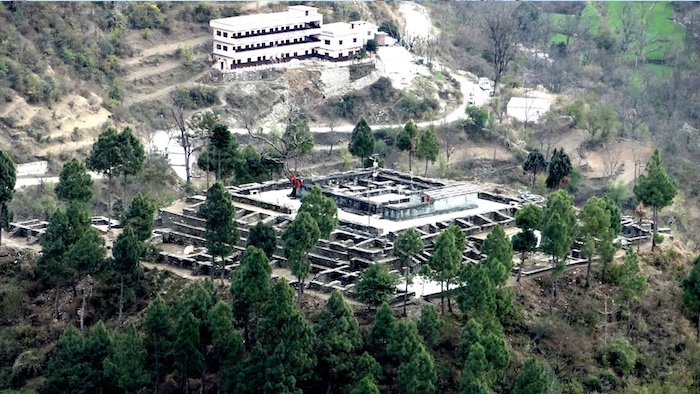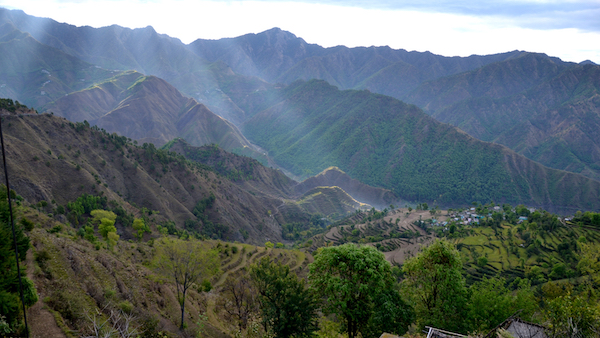Garhwal: history
This is a collection of articles archived for the excellence of their content. |
Communications in ancient, mediæval times
Smoke and voice signals
Chandrima Banerjee, April 13, 2021: The Times of India

From: Chandrima Banerjee, April 13, 2021: The Times of India

From: Chandrima Banerjee, April 13, 2021: The Times of India

From: Chandrima Banerjee, April 13, 2021: The Times of India

From: Chandrima Banerjee, April 13, 2021: The Times of India

From: Chandrima Banerjee, April 13, 2021: The Times of India
Even two decades ago, every time someone in the villages of Garhwal left home, they carried a piece of dry wood. On their way out and on their way back, they would place it on the highest hilltop. The pile that amassed over time, called ‘khadpatia’, was their first line of defence. If there ever was a cause for alarm, the pile of dry wood would be set on fire — a signal for villages nearby that something was wrong, like the beacons in Tolkien’s Middle Earth. No one remembers ever seeing the khadpatia on fire. It’s folklore now.
But legend is often rooted in history. And Nagendra Singh Rawat found just that, in a network of 193 forts and fortresses in Garhwal that used a Tolkien-like signal systems of fire and smoke to alert settlements nestled in central Himalayan mountains of hostile incursions — over 1,000 years ago. As each village would see the fire, it would light its own pile on the mountaintop, passing on the message, sending word for help and signaling an alert.
“But what would they do if it rained, or the winds were too strong? They would raise an alarm by voice, awaz lagana, aided by the sound of drums, dhol and damao (local traditional instruments). The people developed secret sound beats that only their own would understand. A sonic network,” Rawat, an assistant professor at the Hemvati Nandan Bahuguna Garhwal University, told TOI. “Not all of them survived. Some beats mutated into music for social affairs, away from their original defence purposes.”
The fortification of the Himalayan mountains that lent Garhwal, land of forts, its name began some time in the 12th century CE, when the power of the Katyuri dynasty began fading. Local chieftains, garhpatis, in their quest for power and expansion, fortified their strongholds and were in frequent conflict with one another. It was also the time, around 1100-1200CE, that Nepal kings Askochalla and Krachalla were leading incursions into what is now Garhwal. Walled up towns and watchtowers high up in the mountains became indispensable to survival. This went on for at least 300 years, until the formidable Ajaypal of Parmar dynasty consolidated power, and may have continued into the 17th century, when there were attacks by rulers in Tibet. “But this phase, the medieval history of the region, has been a big vacuum,” Rawat said.
So, Rawat, as part of a UGC-funded study over six years, visited sites known historically and in legend, interviewed villagers, went over archaeological records and, then, used GPS mapping and statistical analysis to identify these structures. The findings were published in the ‘Antiquity’ journal by the Cambridge University Press last week.
“After I traced more than 190 locations of such forts and fortalices (small forts), it made me wonder if they were built randomly or followed a pattern,” Rawat said. But there was no archaeological evidence of these signal systems. So, Rawat and co-authors Prof Vinod Nautiyal, Dr Tom Brughmans and Prof Devi Dutt Chauniyal used something called line of sight analysis. Using geographic coordinates and GPS data, they tested inter-visibility of the largest catalogue of Garhwal forts and fortalices they had anyway compiled.
With that, they established two kinds of networking between the forts and fortalices — local networking and supra networking. Local networking worked within the valley. The Chaundkot fort, for instance, formed a network with its fortalices Kim, Deeba and Gurad, among others. The researchers found nine such local network clusters. Then, forts and fortalices which connect two clusters were found to form supra networks, in which all nine clusters worked together. In the 15th century CE, this supra network helped King Ajaypal to consolidate and control the entire Garhwal region.
The 15-25km range between forts and fortalices was one within which these signal systems appeared to work. Fire and smoke signals would be visible and observation points would be spread out widely enough to allow the strategic sounding of an alert. They also found some structures acted as hubs — central forts and fortalices in nodal points, which could relay the word to two or more centres at the same time because of their location. Most of them were located in the northern, eastern and southern border regions of what is now Garhwal. The political heartland appears to be Chaundkot Fort cluster. Another important node is the Lohba Fort, a visual bridge between the northeast cluster and the central cluster. The western part of the region they studied, however, did not have too many such visual signal structures, probably because they were aligned to western Himalayan kingdoms (now Himachal Pradesh).
“I am a Garhwali; I grew up listening to stories and legends of how enemy clans were fought off. What started out as an attempt to understand something from my childhood led me here,” Rawat said. “This was part of my PhD thesis. What I understand now is that we can draw a line from modern practices back to ancient warfare and signalling strategies.”